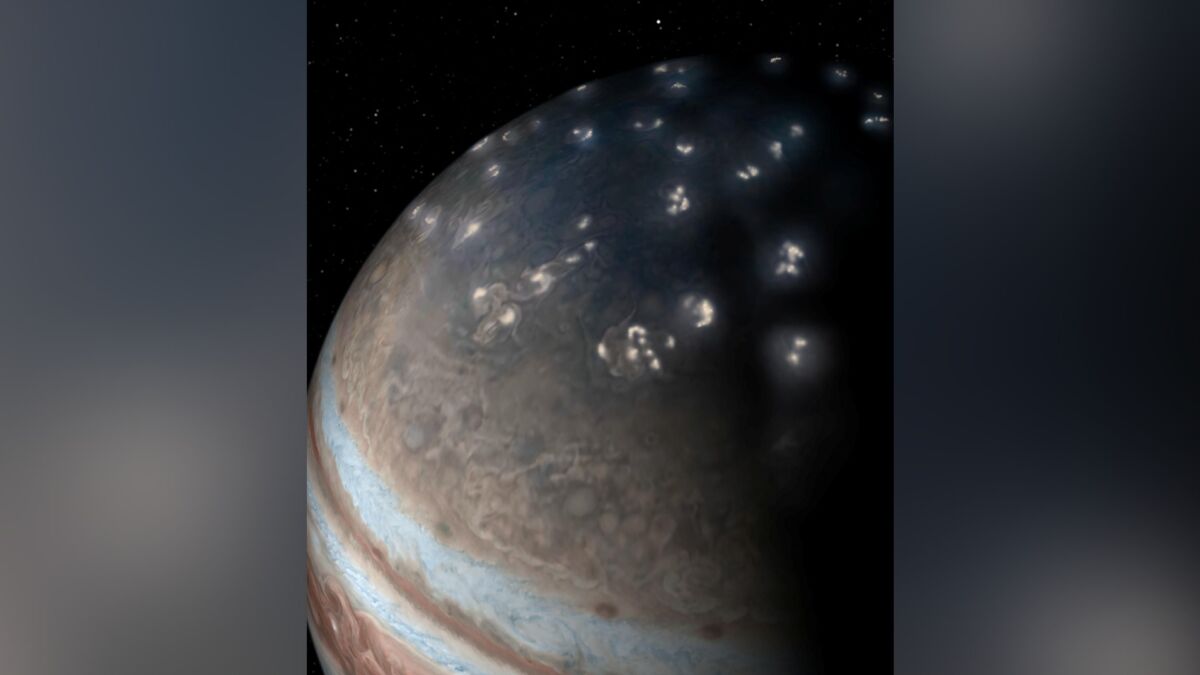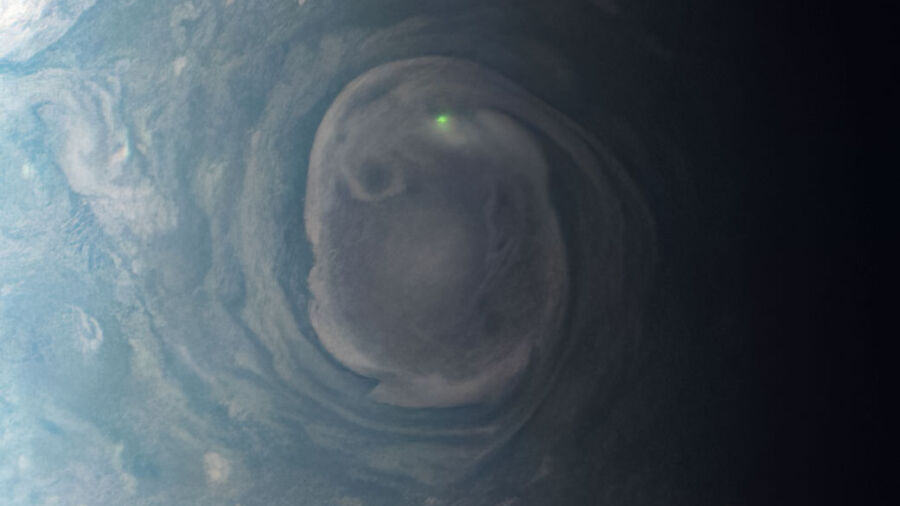NASA’s Juno spacecraft has captured a green glow of lightning from inside a vortex on Jupiter. The vortex is one of many that congregate Jupiter’s north pole.
The Juno spacecraft, which first departed Earth to observe Jupiter and its moons in 2016, captured the event during its 31st close flyby of the planet on Dec. 30, 2020. The mission was approximately 19,900 miles (32,000 kilometers) above the cloud tops when the image was taken.
Using raw data from the spacecraft’s JunoCam instrument, citizen scientist Kevin M. Gill developed the final image in 2022.
Jupiter is the largest planet in our solar system, fifth from the sun, composed of mainly hydrogen and helium, and one of the two gas giants in our system, along with Saturn. It is the third brightest natural object in the night sky, after the moon and Venus.
Scientists are still trying to fathom the many aspects of Jupiter, including its colossal storm systems and how lightning occurs on the planet.

On Earth lightning occurs from water clouds and the majority of lightning occurs closer to the Equator. However on Jupiter, lightning strikes occur from clouds of ammonia and water, and happen most often at the planet’s north and south poles.
Juno’s orbit around Jupiter is constantly shifting closer to the planet over time, so the spacecraft will closely pass its night side in the coming months, allowing for more opportunities to observe lightning on the planet’s surface.
Juno is equipped with multiple devices that can observe below the thick clouds on Jupiter to collect data on the planet’s origins, atmosphere, and weather phenomena.
The spacecraft has done over 50 flybys of Jupiter and has also made close passes by three of Jupiter’s largest moons, including the icy Europa and Ganymede, and Io, the most volcanically active domain in our solar system.
“Our upcoming flybys in July and October will bring us even closer, leading up to our twin flyby encounters with Io in December of this year and February of next year, when we fly within 1,500 kilometers of its surface,” said Scott Bolton, Juno principal investigator from the Southwest Research Institute in San Antonio, in a statement.
Juno’s current investigation will allow scientists to gain a better understanding of Jupiter and the planet’s unique features.

